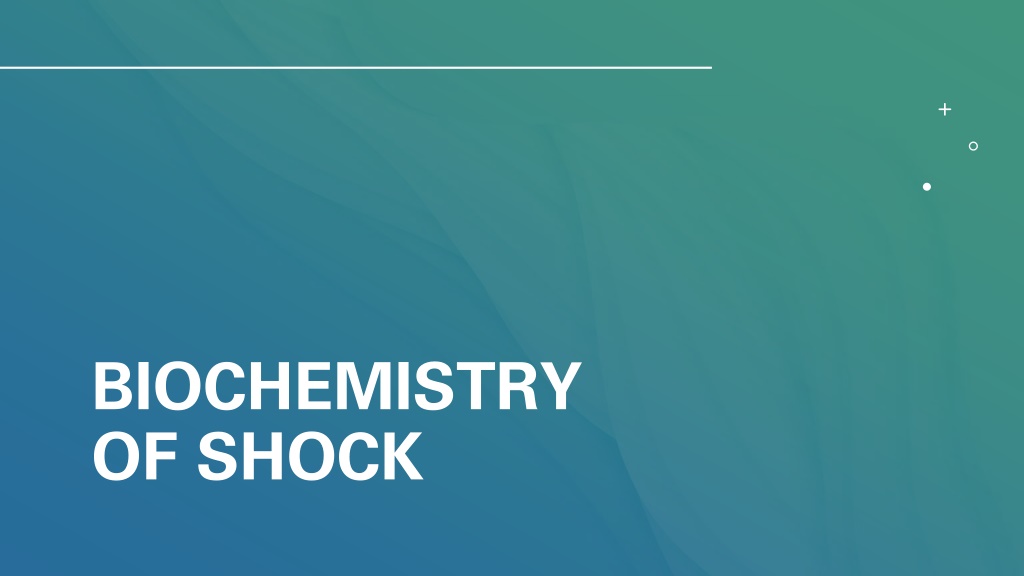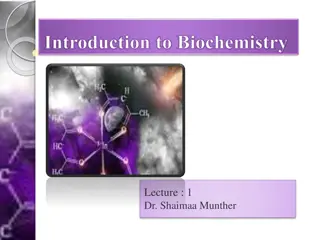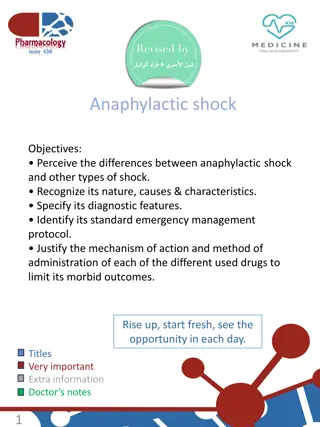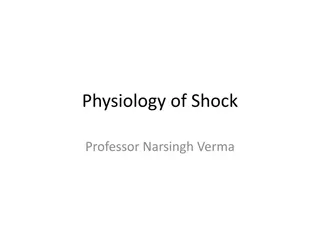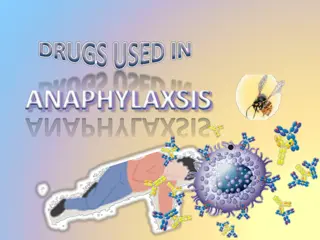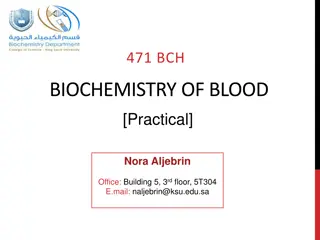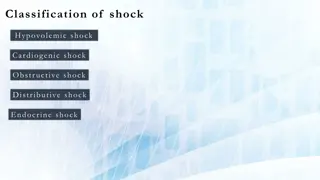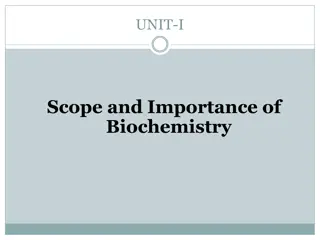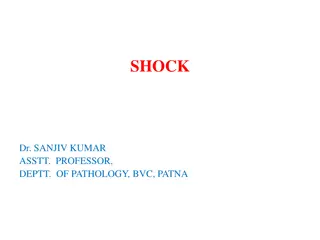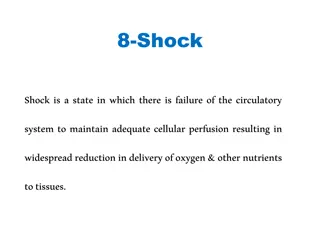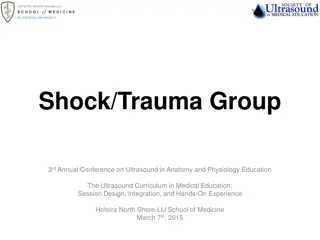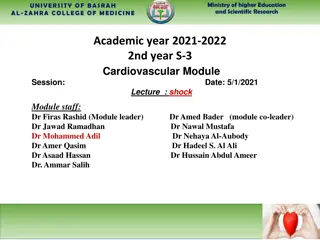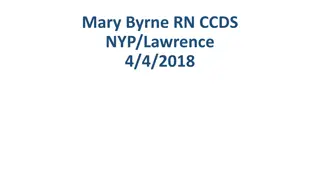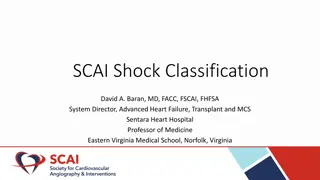Understanding the Biochemistry of Shock
Shock is a critical condition where circulation fails to meet cells' nutritional needs, leading to a range of potentially life-threatening events. Primary and secondary types of shock are discussed, emphasizing the significant impact on oxygen supply and demand at the cellular level. The effects of shock on the cardiovascular and respiratory systems are also outlined.
Download Presentation

Please find below an Image/Link to download the presentation.
The content on the website is provided AS IS for your information and personal use only. It may not be sold, licensed, or shared on other websites without obtaining consent from the author. Download presentation by click this link. If you encounter any issues during the download, it is possible that the publisher has removed the file from their server.
E N D
Presentation Transcript
BIOCHEMISTRY OF SHOCK
Shock Shock may be defined as a condition in which circulation fails to meet the nutritional needs of the cells and at the same time A final common pathway for many potentially lethal clinical events (hemorrhage,trauma, burns, large MI, massive pulmonary embolism microbial sepsis) fails to remove the metabolic waste products Shock is a physiologic event with many different causes; but if untreated it has a single clinical outcome
Primary (INITIAL SHOCK) Types of Shock Secondary (TRUE SHOCK) Anaphylactic (Type I immunologic reaction) True shock- circulatory imbalance between oxygen supply and oxygen requirements at cellular level; hence name CIRCULATORY SHOCK
Primary or Initial shock transient and usually benign vasovagal attack resulting from sudden reduction of venous return to the heart caused by neurogenic vasodilatation and consequent peripheral pooling of the blood It can occur immediately following Trauma Severe pain Emotional overreaction due to a)Fear b)Sorrow and surprise c)Sight of blood
Secondary (or) True shock occurs due to haemodynomic derangements with hypoperfusion of the cells, this type of shock is the true shock .
NON- PROGRE SSIVE (INITIAL, COMPE NSATED REVERSI BLE ) SHOCK
EFFECT OF SHOCK CARDIOVASCULAR decrease of preload and afterload Baroreceptor response Release of catechol amines Tachycardia and vasoconstriction. RESPIRATORY Metabolic acidosis Inc. respiratory rate and excretion of carbon dioxide Results in compensatory resp. alkalosis
RENAL and ENDOCRINE decreased urine output stimulation of renin angiotensin and aldosterone axis release of vasopressin from hypothalamus resulting vasoconstriction and increase Na+ and water reabsorption
CELLULAR Cells switch from aerobic to anaerobic metabolism Decreased ATP production lactic acidosis Glucose exhausts and aerobic respiration ceases Na+/ K+ pump impaired Lysosomes release autodigestive enzymes mitochondria damage cell death
ULTIMATE EFFECTS OF ANAEROBIC METABOLISM
METABOLIC CHANGES IN SHOCK CARBOHYDRATE METABOLISM Compensated shock : Hyperglycemia due to increased hepatic glycogenolysis. Decompensated shock : Hypoglycemia due to hepatic glycogen depletion & increased consumption of glucose by tissue. Anaerobic glycolysis occurs as assessed by high blood levels of lactate & pyruvate
PROTEIN METABOLISM Increased intracellular protein catabolism Conversion of amino acids to urea. Increased blood non-nitrogen protein. FAT METABOLISM Increased endogenous fat metabolism. Rise of fatty acid level in blood. WATER & ELECTROLYTE DISTURBANCES Failure of sodium pump potassium leaves the cell (hyponatremia) causes cellular swelling Shock due to loss of plasma only (in burns) hemoconcentration
METABOLIC ACIDOSIS Hypoxia of kidney, renal function is impaired blood levels of acids like lactate, pyruvate, phosphate & sulfate rise causing metabolic acidosis. MORPHOLOGIC COMPLICATIONS Morphologic changes in shock are due to Hypoxia. resulting in degeneration & necrosis in various organ. Organs affected are : Brain, Heart, Lungs, Kidneys, Adrenals and GIT
